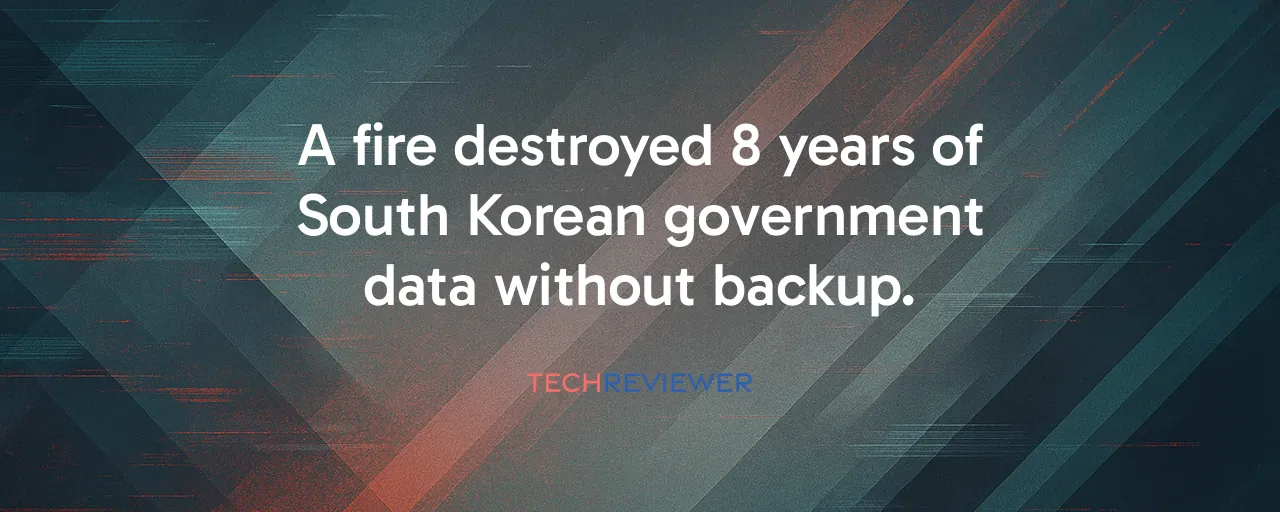A Fire That Changed Everything
On September 26, 2025, a routine maintenance task in Daejeon, South Korea, spiraled into catastrophe. A lithium-ion battery in the National Information Resources Service data center caught fire, obliterating 858 terabytes of government data stored on the G-Drive system. Used by 125,000 civil servants across 74 ministries, this cloud storage platform held eight years of critical work documents. The kicker? There was no backup. The blaze, which raged for 22 hours, exposed a glaring truth: even advanced digital systems can crumble without proper safeguards.
The fallout was immediate. Government employees, who relied on G-Drive for everything from policy drafts to administrative records, found their operations grinding to a halt. Citizens faced disruptions too, with mobile ID systems, tax portals, and emergency services like 119 location tracking thrown into chaos. The incident, one of the largest government data losses in modern history, sent shockwaves through South Korea and beyond, raising tough questions about how we protect the digital backbone of society.
Why No Backup? Unpacking the Oversight
The absence of a backup for G-Drive stunned observers. An official cited its massive 858-terabyte capacity as the reason, claiming backups were impractical. Yet, cloud storage costs have plummeted. Storing that much data on AWS S3 would run about $20,000 a month, a fraction of the $12.6 billion in damages small businesses faced from disrupted government services. The decision to skip redundancy wasn't just a misstep; it paralyzed entire ministries, with the Ministry of Personnel Management reporting operations at a standstill.
Compare this to the 2021 OVHcloud fire in Strasbourg, France, where a data center blaze destroyed business data for companies without offsite backups. Unlike South Korea, OVHcloud's clients had options to recover through third-party providers, but the lesson was clear: single-site storage is a gamble. South Korea's reliance on one data center, with no geographic redundancy, turned a localized fire into a national crisis. The incident underscores a brutal reality: cost-cutting on backups can cost far more in the long run.
The Hidden Risks of Lithium-Ion Power
Lithium-ion batteries, hailed for their efficiency and compact size, powered the data center's uninterruptible power supply. They offer three to five times the energy density of traditional lead-acid batteries, making them a favorite for modern facilities. But there's a catch. When handled improperly, these batteries can enter thermal runaway, a dangerous chain reaction that releases toxic gases and burns at temperatures exceeding 600 degrees Celsius. The Daejeon fire, sparked during battery relocation, highlights this danger.
This wasn't an isolated incident. In 2024, a lithium-ion battery fire at Digital Realty's Singapore facility disrupted Alibaba Cloud services, though backups prevented permanent data loss. Globally, 23 data center battery fires were reported between December 2023 and May 2025, with 78 percent confined to battery rooms. Proper containment and fire suppression can limit damage, but South Korea's facility lacked specialized systems for lithium-ion fires, amplifying the disaster. The industry now faces a reckoning over battery safety standards.
Lessons for a Digital Future
South Korea's disaster offers a blueprint for what not to do. First, backups aren't optional. The 3-2-1 rule, three data copies on two media types with one offsite, is a proven standard that G-Drive ignored. Cloud providers like AWS and Google Cloud show how multi-region setups can prevent total loss, as seen in Google's 2015 lightning strike incident, where only a minuscule 0.000001% of data was lost. Second, lithium-ion batteries need tailored fire suppression, like immersion cooling, to prevent thermal runaway from escalating.
On the flip side, some argue centralized data centers offer security and cost benefits over distributed systems. Others defend lithium-ion batteries, noting that lithium iron phosphate chemistry reduces fire risks. Yet, these arguments falter when a single failure, like Daejeon's, wipes out years of work. The incident pushes governments and businesses to rethink digital resilience, from mandatory backup regulations to stricter battery safety codes. As data centers power our world, one truth stands out: cutting corners invites catastrophe.
